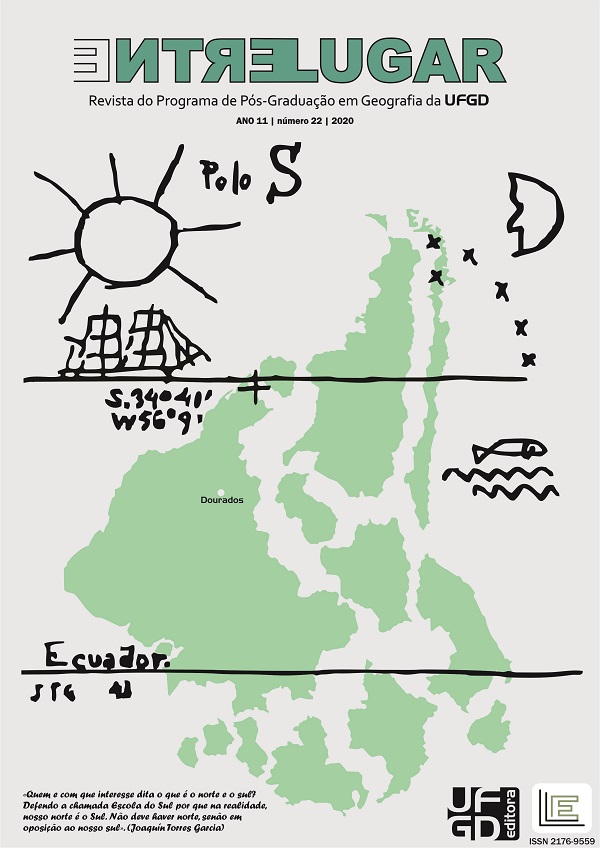The appropriation of nature and the reinvention of capital in the protected areas of transboundary Pantanal: the case of the Otuquis National Park (Bolivia), National Park of Pantanal Mato-Grossense (Brazil) and the National Park Río Negro (Paraguay)
DOI:
https://doi.org/10.30612/el.v11i22.10601Keywords:
Nature. Appropriation. Capital. Protected Areas. Pantanal.Abstract
This article aims to identify how the protected areas located in the Transboundary Pantanal (Bolivia, Brazil and Paraguay) have been appropriated and reinvented by capital. The main objective is to analyze how some interest groups have appropriated these areas to implement infrastructure works, which in no way contribute to conservation. From the perspective that, behind the conservationist ideal, the appropriation of nature and its transformation is embedded, where capital appropriates natural resources in the perspective of accumulation, it was decided to use the concept of nature, while a social production arising social relations. The methodology used was a combination of bibliographic research and field research in the following protected areas: Otuquis National Park (Bolivia), Pantanal Mato-Grossense National Park (Brazil) and Río Negro National Park (Paraguay), where interviews were conducted with those responsible for managing these areas. Therefore, this analysis appears with the possibility of identifying what type of conservation is linked to these protected areas, taking into account that these areas were created by the Nation States and justified by the need to guarantee the conservation of the Pantanal. However, although there are divergences around their management and the idea of conserving, something is common in all of them - the overlapping of economic interests.
Downloads
References
AB’ SÁBER, A. N. Brasil: paisagens de exceção: o litoral e o Pantanal Mato–Grossense. Cotia-SP: Ateliê Editorial, 2006.
BOLIVIA. Decreto Supremo Nº 29357. La Paz, 30 de noviembre de 2007.
BOLÍVIA. Reglamento General de Áreas Protegidas, La Paz, 31 de julio de 1997.
COMITÉ INTERGUBERNAMENTAL DE LA HIDROVÍA PARAGUAY PARANÁ (CIH). Informe de la Secretaría Ejecutiva del CIH: Uma mirada actual. 16 de Julho 2018. Dísponivel em: http://www.hidrovia.org/userfiles/documentos/nuevo_informe_hidrovia_rev2.pdf. Acesso em 18/11/2018.
COSTA, Cecilia Aparecida. A criação do Geoparque Bodoquena-Pantanal no Mundo da sustentabilidade: a mercantilização da natureza e a produção de territórios. Dourados- MS: Faculdade de ciências Humanas da Universidade Federal da Grande Dourados, 2018. 229 p. (Tese- Doutorado em Geografia).
EL DIARIO ECONÓMIA. Potencialidades productivas de Bolivia. Disponível em:http://www.eldiario.net/noticias/2015/2015_09/nt150901/economia.php?n=13&-potencialidades-productivas-de-bolivia. Acesso em 21 de novembro de 2018.
FARIA, Alcides Bartolomeu de. Hidrovia Paraná Paraguai: o megaprojeto rearticulado. Campo Grande -MS: ECOA, 2014.
HORTON, Emily Y. Gran Pantanal Paraguay.Assunción: Asociación Guyra Paraguay: 2010.
IBGE. Malha Digital do Brasil, 2017.
IBGE - Instituto Brasileiro de Geografia e Estatística. Mapa de Biomas. Localização: Rio de Janeiro: IBGE, 2004.
MARX, Karl. O Capital. Vol. 1. Nova York: International Publishers, 1967.
NASH, Roderick Frazier. Wilderness and the American Mind: Fifth Edition. Yale University Press. Livro Digital, 2014.
SMITH, Neil. Desenvolvimento Desigual. Natureza, Capital e a Produção de Espaço. Tradução: Eduardo de Almeida Navarro. Rio de Janeiro: Bertrand Brasil S. A. 1988.
SERNAP, Servicio Nacional de Areas Protegidas de Bolivia. Informe Técnico. La Paz: SERNAP, 2003.
THOMAS, Keith. O Homem e o Mundo Natural – Mudanças de atitudes em Relação às Plantas e aos Animais (1500 – 1800). Tradução: João Roberto Martins Filho. São Paulo: Companhia das Letras, 1988.
MINISTERIO DE OBRAS PÚBLICAS, SERVICIOS Y VIVIENDA. Presentación Motacucito- Mutun- Puerto Busch. Disponível em: https://www.oopp.gob.bo/uploads/presentacion_motacucito_-_mutun_-_puerto_busch1.pdf, 2015. Acesso em 01 de novembro de 2018.
Downloads
Published
How to Cite
Issue
Section
License
Autores que publicam nesta revista concordam com os seguintes termos:
- Autores mantém os direitos autorais e concedem à revista o direito de primeira publicação, com o trabalho simultaneamente licenciado sob a Creative Commons Atribuição-NãoComercial-CompartilhaIgual 3.0 Brasil que permitindo o compartilhamento do trabalho com reconhecimento da autoria do trabalho e publicação inicial nesta revista.
- Autores têm autorização para assumir contratos adicionais separadamente, para distribuição não-exclusiva da versão do trabalho publicada nesta revista (ex.: publicar em repositório institucional ou como capítulo de livro), com reconhecimento de autoria e publicação inicial nesta revista.
- Autores têm permissão e são estimulados a publicar e distribuir seu trabalho online (ex.: em repositórios institucionais ou na sua página pessoal) a qualquer ponto antes ou durante o processo editorial, já que isso pode gerar alterações produtivas, bem como aumentar o impacto e a citação do trabalho publicado (Veja O Efeito do Acesso Livre).




